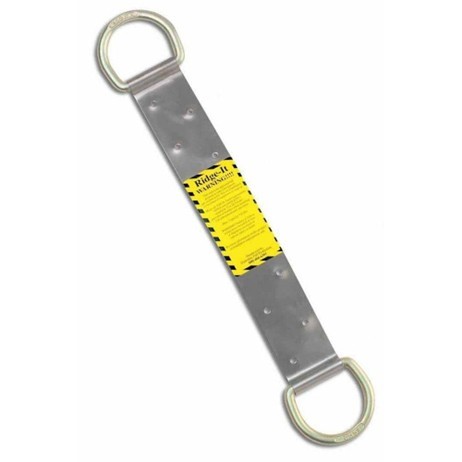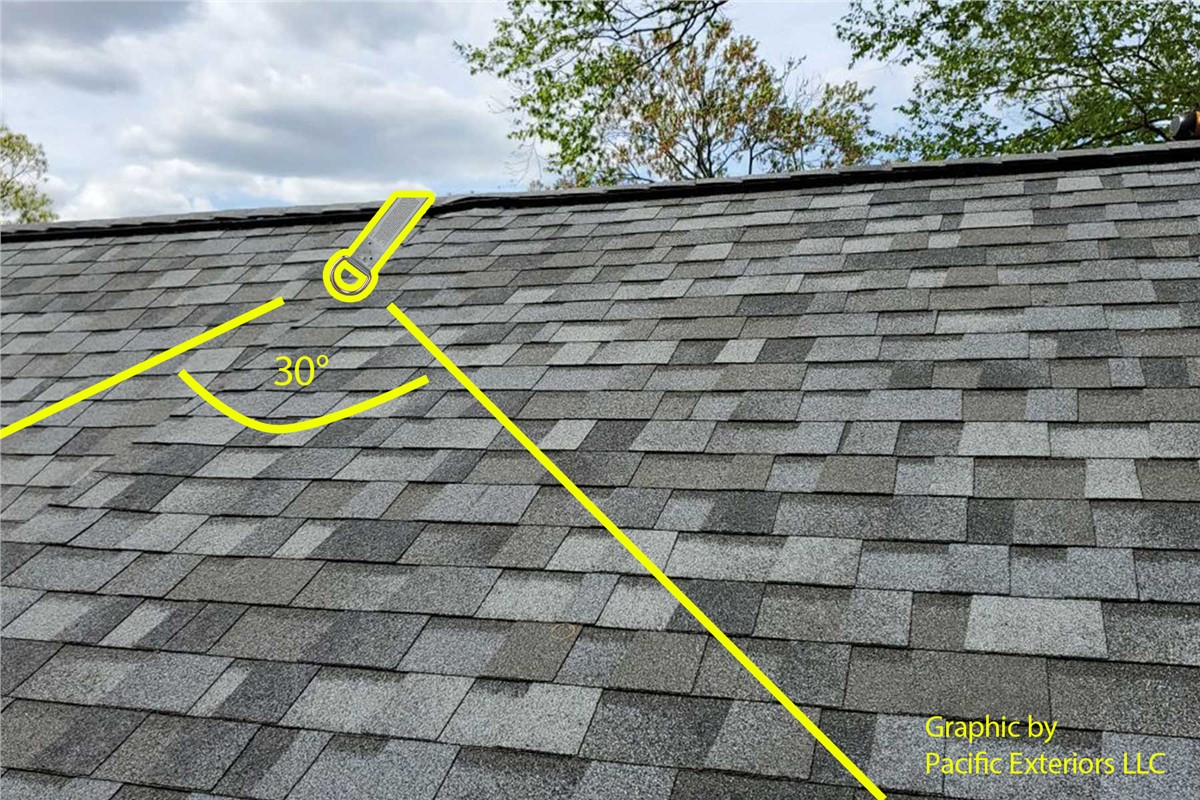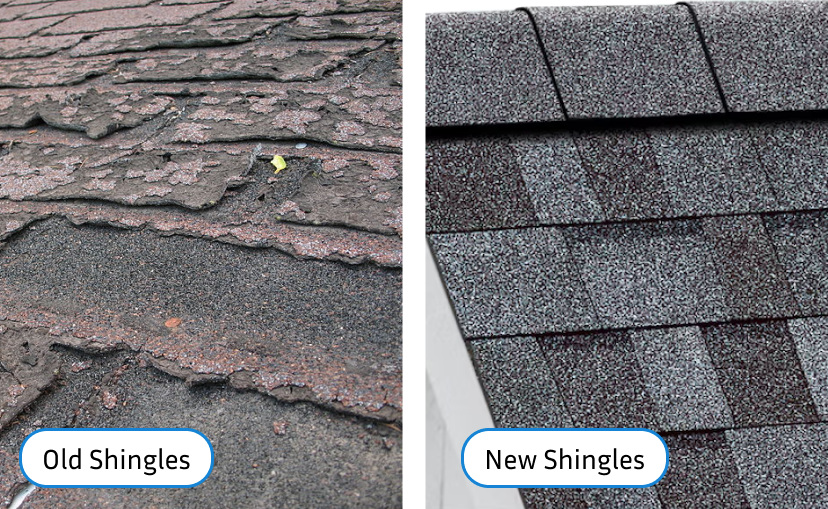The function of a roof on your home is the same regardless of what kind of roof you have: to protect your home, family, and belongings from weather damage.
To achieve this goal, houses are often built with angled roofs. From a gabled roof to a saltbox roof, many roofing types are angled to help water and debris flow away from your home.
That makes it hard for roofers to walk on. How do they protect themselves whilst working on your roof? What could happen if they don’t take the necessary protective measures whilst working so high in the air and on a slant?
This article will dive into the necessary protective measures that roofers must take whilst doing any roof repair or installation.
What Does ‘Tied Off’ Mean?
The term “tied off” refers to the security rope (aka “personal arrest system”) that anyone must wear if they are standing a certain distance above ground.
In Washington and Oregon, if you are standing 4 feet above ground, you must wear a fall arrest system. In Atlanta, you need to wear protective equipment above 15 feet.
Tying yourself off means that if you fell anywhere whilst working on your roof, the rope would catch you and you wouldn’t be able to fall off at all.
What Are Roofers Tied To?
Here at Pacific Exteriors, we usually tie ourselves the highest point of a roof.
This is done by installing attachment devices called d-rings to the sheathing and foundation of the roof by nailing and fastening it into place. Each house usually gets 2 to 4 d-rings, but it depends on how large the house is.

Roofing layers then go over the d-rings, and they remain accessible even once all the roofing renovation is complete—the d-ring lies beneath the asphalt shingles and ridge caps. This enables them to be used by future roofers and homeowners for a safe time on the roof.
Fret not, it doesn’t damage your home at all! Rather, it provides an excellent and safe way for you to conduct your own roofing inspections in the future.
For flat roofs, it requires a bit more strategy on the roofer’s part. Because there’s not an obvious high point like there are with gabled roofs, contractors will have to look for secure and balanced places to drill the d-ring in. It really depends on the style of flat roof and what elements are available there.
What Does Safe Movement on a Roof Look Like?
When roofers are working, it is mandated by OSHA that they attach their ropes to one ring whilst working. If they need to move for whatever reason, they must immediately reattach themselves to another d-ring or descend from the roof immediately.
This precaution means that moving around the d-rings can be a little tricky. The idea is that roofers are not allowed to exceed a 30° angle from the d-ring.

Only 1 roofer is allowed to be clipped into each ring. It’s likely that it could support two people, but that is incredibly unsafe and they are made to support only one person per ring.
How Do We Ensure Roofers Are Protected?
We take safety seriously here at Pacific Exteriors. It’s part of the reason our project managers are so engaged with the contractors they work with—it’s important to us to have a solid rapport with everyone involved in the project.
To ensure our roofers are always protected whilst working up there, our project managers will conduct checks to ensure everyone is complying to the safety rules of roof installation.
It can get tricky sometimes to tell whether roofers are clipped in since it can be hard to see the d-ring itself. However, at Pacific Exteriors, all our contractors understand that safety is a priority here. We haven’t had any crazy roofing accidents because we all follow this policy strenuously.
How Do Roofers ‘Walk’ On Steep Roofs?
The most common type of roof in the United States is a gabled roof. That means they almost always have an angle—and our roofers are used to that. But what if your roof is incredibly steep?
It may seem surprising, but we use the same equipment. However, the ropes don’t only function as safety measures.
With steeper roofs, contractors will use the rope as their support whilst working on the roof. So instead of relying it to catch them if they call, they rely on it to keep them hoisted up whilst installing new shingles.
Of course, there are some differences between installing a steep roof and a less steep roof. The contractors that work on steep roofs must wear special felt-soled shoes to not damage the new shingles they’re installing.
Usually though, roofs aren’t steep enough to warrant this approach to roofing.
How Often Do Roofing Accidents Occur?
It’s both our and your greatest nightmare if a contractor falls off a roof they’re working on.
Nationwide, the statistics are quite grim. According to OSHA and the CDC 2024 reports, only 2% of roofing workers use fall protection at all times and falls from roofing account for nearly 40% of all construction fatalities. Being unsafe while installing a new roof literally kills.
Rest assured: In the near 20 years Pacific Exteriors has been working in the siding and roofing industry, we have not had a single accident where someone fell off the roof. Roofing accidents at Pacific Exteriors occur infrequently because we prioritize and emphasize safety!
What if a Contractor Isn’t Tied Off?
Aside from the glaring safety concern, it could indicate a slippery slope of problems.
If a contractor isn’t tied off, or adhering to proper safety standards in another way, it could mean that they are lacking in other departments as well: such as the necessary paperwork to even operate as a business.
A quick horror story: one of our customers had contracted a company that didn’t have workers compensation, a necessary form of insurance that protects workers’ rights in the case of an accident. Because the company didn’t have it, the homeowner was billed for all the medical procedures one of the employees needed to have—because the company didn’t have workers comp.
Even if you don’t choose Pacific Exteriors, we want you to choose a contractor you believe in. That’s why we have a swathe of articles available on our website to help homeowners like you choose a reliable contractor with your home renovation.
Trust Pacific Exteriors LLC with Your Safe Roof Installation
With nearly 20 years of experience in the roofing and siding industry, Pacific Exteriors is a reliable choice when it comes to your roof renovation.
Not only do we have the experience to install your roof perfectly, we also have the credentials to back it up.
Schedule your free consultation today by filling in the form, and we’ll take care of the rest of the work.
Subscribe to Pacific Exteriors LLC's Blog





Comments